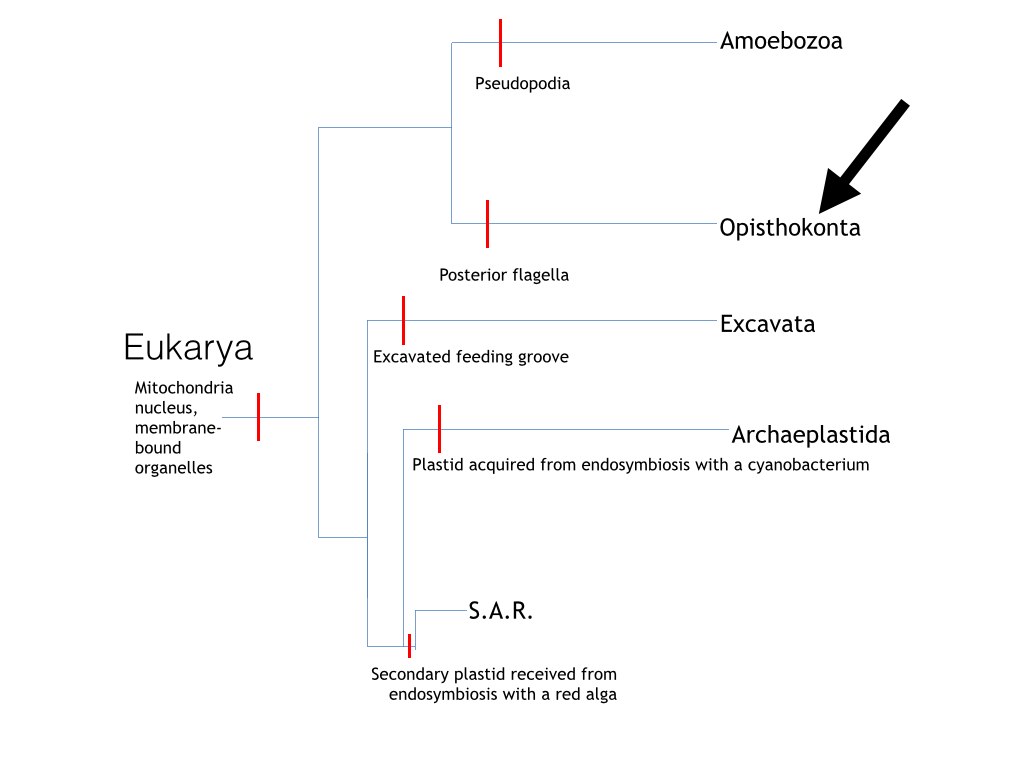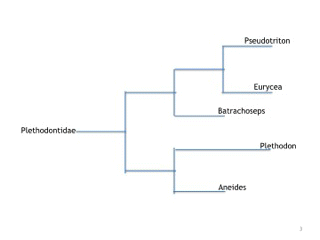Classification
Organism name: Eurycea lucifuga
Eurycea is used to identify North American Salmanders.
Lucifuga refers to an organism that prefers darkness, i.e. caves.
Common Name: Cave Salamander
Domain Eukarya: Organisms in this domain have a membrane bound nucleus and organelles.
 Phylogenetic
Tree of the Eukarya domain, showing synapamorphies and major clades.
The Cave Salamander belongs in the clade Opisthokonta.
Phylogenetic
Tree of the Eukarya domain, showing synapamorphies and major clades.
The Cave Salamander belongs in the clade Opisthokonta.
Clade Opisthokonta: Members of this clade have a part of their life cycle where they have a posterior flagellum.
Kingdom Animalia: E. Lucifgua belongs in this kingdom due to the fact that it multicellular, and heterotrophic.
Phylum Chordata: Species found in this phylum all contain a nerve cord down the length of their body.
Class Amphibia: This class is described by having aquatic larva, that breathe through gills, followed by a life cycle stage that lives on land and breathes air.
Order Caudata: The cave salamander fits into this class because it keeps its long tail through its whole life, has short limbs, and a very thin skull.
Family Plethodontidae: E. Lucifuga is classified into this group due to the fact that it lives in North America in both terrestrial and freshwater habitats and does not have lungs or gills in the adult stage.
 Phylogenetic
Tree of Family Plethodontidae, Cave Salamander belongs to the Genus
Eurycea, its closest relatives are in the genus the Pseudotriton.
Phylogenetic
Tree of Family Plethodontidae, Cave Salamander belongs to the Genus
Eurycea, its closest relatives are in the genus the Pseudotriton.
Genus Eurycea: This genus is categorized by living in caves in North America.
Species Eurycea lucifuga: Specific species identifiers include orange to yellow body with black spots, found in caves primarily in Texas.
Information on taxonomy found on Animal Diversity Web.
Know that you know how to classify this organism, continue to the habitat page to find out where it lives